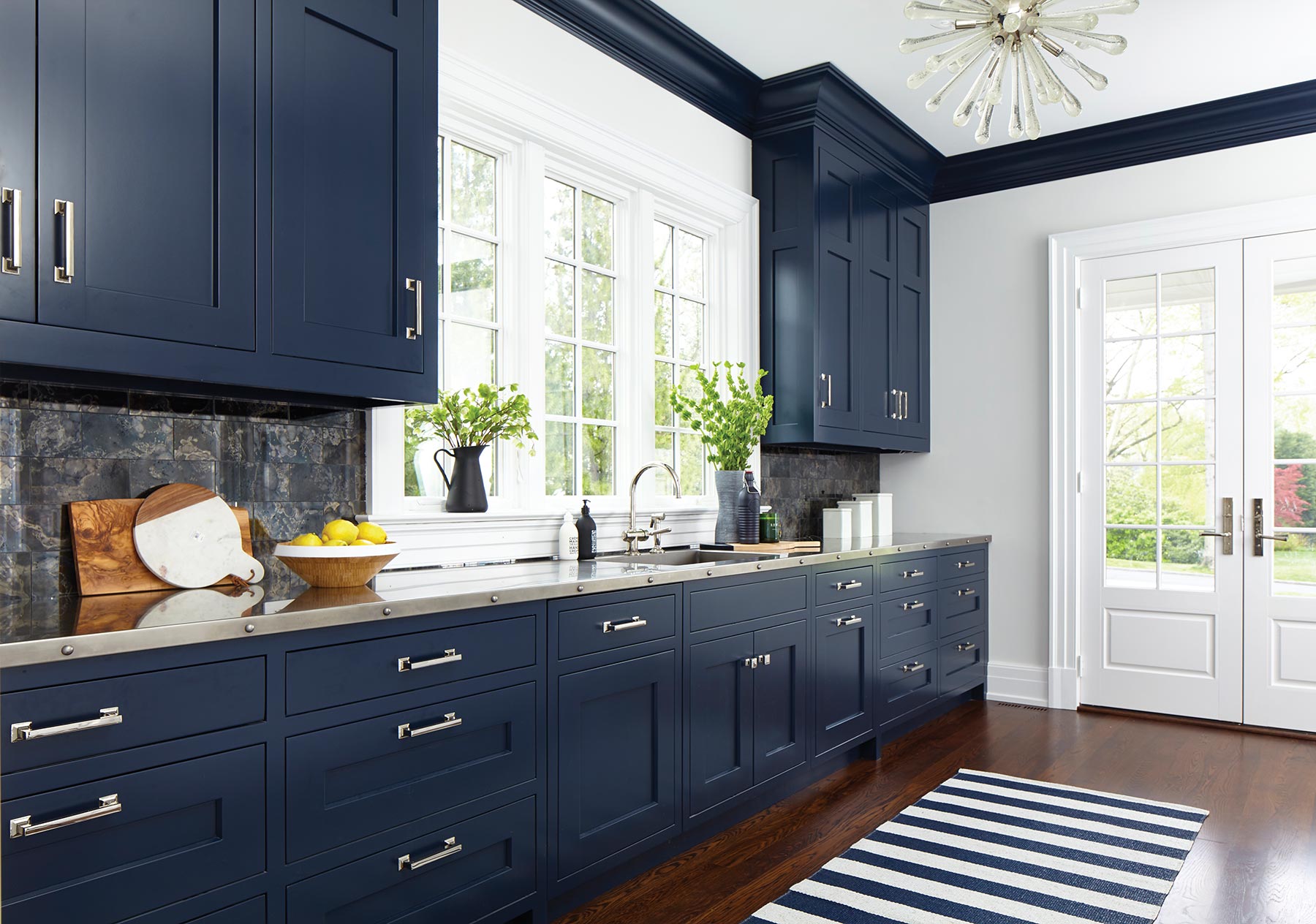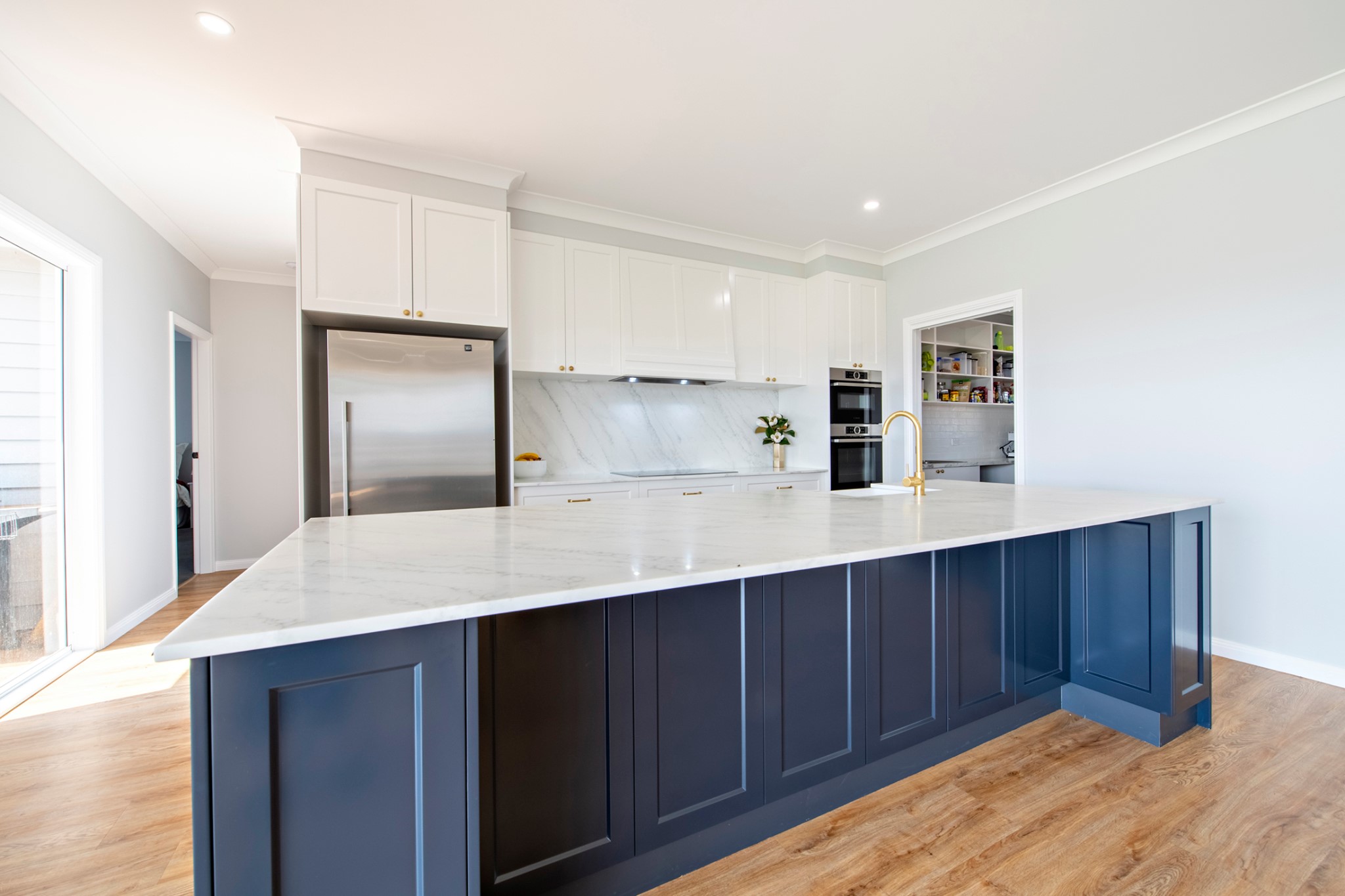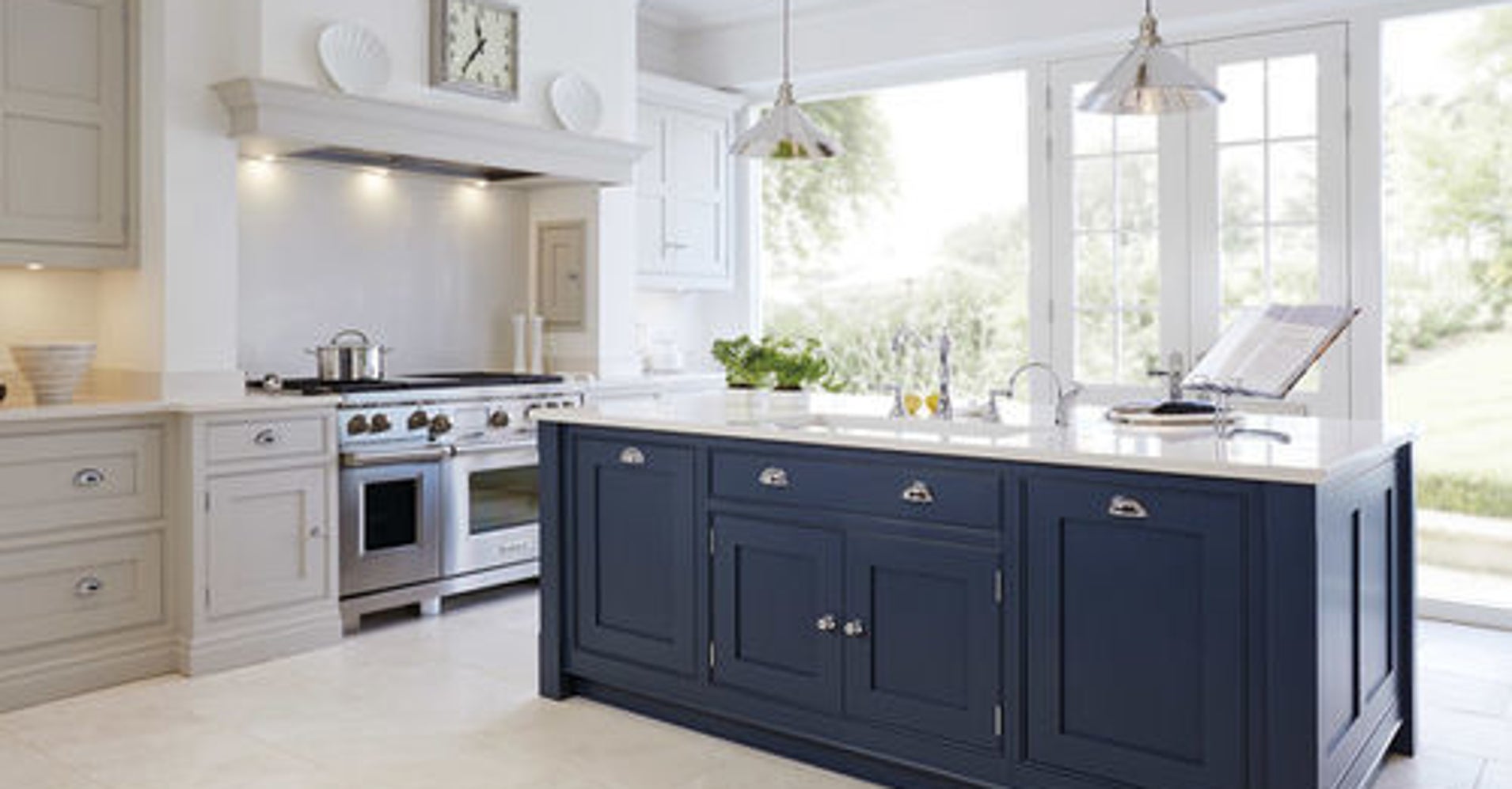Exploring Shades of Blue for Cabinets: Best Blue For Cabinets

Choosing the perfect shade of blue for your kitchen cabinets can dramatically impact the overall mood and style of your space. From calming serenity to vibrant energy, the right blue can transform your kitchen into a haven you’ll love. Understanding the nuances of different blue shades and their undertones is key to making an informed decision.
Blue Cabinet Shades and Their Visual Impact, Best blue for cabinets
The following table showcases a variety of blue cabinet shades, their descriptions, suitable kitchen styles, and examples of how they might appear in a room. Consider these examples as starting points for your own creative exploration.
| Shade Name | Description | Suitable Kitchen Style | Example Room Setting Description |
|---|---|---|---|
| Serene Sky | A light, airy pastel blue with hints of gray. | Coastal, Farmhouse, Modern Minimalist | Imagine a bright, sun-drenched kitchen with white countertops and natural wood accents. The Serene Sky cabinets create a feeling of openness and tranquility. |
| Ocean Breeze | A medium-toned blue with subtle green undertones, reminiscent of a calm ocean. | Coastal, Transitional | This shade pairs beautifully with creamy white backsplashes and stainless steel appliances. Natural light enhances the subtle green undertones, creating a calming and sophisticated atmosphere. |
| Navy Blue | A deep, rich blue, evoking feelings of sophistication and luxury. | Traditional, Modern, Eclectic | Picture a dramatic kitchen with dark wood floors, brass hardware, and white marble countertops. The Navy Blue cabinets create a sense of drama and elegance. |
| Steel Blue | A cool-toned blue with gray undertones, offering a modern and industrial feel. | Modern, Industrial | This shade complements concrete countertops and metallic accents. The overall feel is sleek, contemporary, and sophisticated. |
Undertones in Popular Blue Cabinet Colors
Undertones significantly influence the overall feel of a kitchen. A gray-blue, for instance, will create a cooler, more contemporary feel than a blue with warmer green or purple undertones. Gray-blue cabinets often work well in modern kitchens with clean lines and minimalist design. Green-blue cabinets, on the other hand, can bring a touch of nature and tranquility, particularly suitable for farmhouse or coastal styles. Understanding these subtle differences is crucial for achieving the desired ambiance.
Blue Cabinets in Modern vs. Traditional Kitchens
The use of blue cabinets differs significantly between modern and traditional kitchen designs.
Best blue for cabinets – Modern Kitchen Designs with Blue Cabinets:
- Often feature clean lines, minimalist hardware, and sleek countertops.
- Blues tend to be cooler tones, such as gray-blues or steel blues, reflecting the style’s emphasis on simplicity and functionality.
- Frequently incorporate metallic accents (e.g., brushed nickel or stainless steel) to complement the cool tones of the cabinets.
Traditional Kitchen Designs with Blue Cabinets:
- Embrace ornate details, such as crown molding, raised panel doors, and decorative hardware.
- Blues are often warmer tones, such as softer blues with green or purple undertones, complementing the richness of the design.
- Frequently paired with materials like granite or marble countertops and warm-toned metals (e.g., brass or bronze).
Blue Cabinets and Their Surroundings

Choosing the perfect shade of blue for your cabinets is only half the battle. The surrounding elements – walls, countertops, and flooring – play a crucial role in creating a cohesive and visually appealing kitchen design. The interplay of colors and textures can dramatically impact the overall feel of the space, from airy and bright to cozy and sophisticated.
Kitchen Design Layouts Featuring Blue Cabinets
Below are three distinct kitchen design concepts showcasing the versatility of blue cabinets paired with different color palettes.
Design 1: Coastal Serenity
Imagine a kitchen with soft, sky-blue cabinets. These are complemented by crisp white walls, creating a bright and airy atmosphere. Light gray quartz countertops provide a subtle contrast, while light oak wood flooring adds warmth and texture. This design evokes a calming coastal feel, perfect for a relaxed and inviting space. The overall aesthetic is clean, modern, and effortlessly stylish.
Design 2: Rustic Charm
This design features deep navy blue cabinets, providing a rich and dramatic focal point. Warm, creamy beige walls create a cozy backdrop, while butcher block countertops introduce a rustic element. Dark brown hardwood flooring grounds the space and complements the navy blue, adding depth and character. This kitchen design is perfect for those who appreciate a more traditional, homey aesthetic.
Design 3: Modern Minimalism
Here, we envision a kitchen with vibrant teal cabinets. These are paired with sleek, white subway tiles on the walls, creating a clean and contemporary look. A white quartz countertop maintains the minimalist aesthetic, while polished concrete flooring adds a touch of industrial chic. The overall feel is modern, sophisticated, and highly functional. The teal cabinets add a pop of unexpected color without overwhelming the space.
The Effect of Natural Light on Blue Cabinets
Natural light significantly impacts how blue cabinets appear. The same shade of blue can look dramatically different depending on the time of day and the direction of the light source.
Morning sun, often warmer and softer, can highlight the undertones of the blue, making cooler blues appear more vibrant and warmer blues appear richer. Evening light, which tends to be cooler and dimmer, can make blues appear slightly muted or more saturated depending on the shade. North-facing kitchens, receiving less direct sunlight, may see a more consistent appearance of the blue throughout the day. South-facing kitchens, with ample sunlight, will experience a more dramatic shift in the cabinet’s appearance throughout the day. This variation should be considered when selecting the shade of blue, ensuring the chosen color complements the kitchen’s natural light conditions.
Incorporating Blue Cabinets into Small Kitchens
Blue cabinets can be successfully incorporated into small kitchens to maximize space and create a sense of openness. Strategic design choices are key to achieving this.
To enhance the feeling of spaciousness in a small kitchen, consider these design tips:
- Opt for lighter shades of blue: Pastel blues or light blues reflect more light, making the space feel larger.
- Use reflective surfaces: Pair blue cabinets with glossy countertops or metallic backsplashes to bounce light around the room.
- Keep the walls light: Light-colored walls, such as white or cream, create a sense of airiness and prevent the space from feeling cramped.
- Minimize clutter: Keep countertops and shelves organized to avoid a cluttered appearance.
- Maximize vertical space: Utilize tall cabinets to store items efficiently, freeing up floor space.
Practical Considerations for Blue Cabinets

Choosing blue cabinets is a stylish decision, but it’s crucial to consider the practical aspects to ensure your beautiful new kitchen remains beautiful for years to come. This section will delve into the durability and maintenance of various finishes, as well as potential challenges and their solutions.
Cabinet Finish Durability and Maintenance
The longevity and ease of maintenance of your blue cabinets depend heavily on the finish you choose. Matte finishes, while offering a sophisticated, slightly muted look, are more prone to showing fingerprints and smudges than their glossier counterparts. Regular cleaning with a soft cloth and a gentle cleaner is essential. Semi-gloss finishes offer a happy medium, providing a touch of sheen while remaining relatively easy to clean. Gloss finishes, known for their high shine, are the most durable and easiest to clean; spills and marks wipe away effortlessly. However, imperfections and minor scratches may be more visible on a high-gloss surface. Consider your lifestyle and cleaning habits when making your selection. A busy family might find the ease of cleaning a gloss finish more appealing, while a more relaxed household might prefer the understated elegance of a matte finish.
Potential Challenges and Solutions
Using blue cabinets presents some unique challenges. One potential concern is color fatigue. The vibrancy of a particular shade of blue might feel overwhelming over time. To mitigate this, consider selecting a softer, more muted shade of blue, or incorporating plenty of neutral elements in the room – white countertops, beige backsplashes, or light-colored flooring – to balance the blue. Another potential challenge lies in matching hardware. The right hardware can elevate your cabinets, while the wrong choice can clash. Experiment with different finishes – brushed nickel, oil-rubbed bronze, or polished chrome – to find the perfect complement to your chosen blue. Consider the overall style of your kitchen; a modern kitchen might pair well with sleek, minimalist hardware, while a more traditional kitchen might benefit from ornate, detailed hardware.
Color Fatigue Mitigation Strategies
To avoid blue cabinet color fatigue, incorporating elements of other colors and textures is crucial. For example, a warm wood tone island can create a visual counterpoint to the cool blue cabinets. Likewise, incorporating pops of other colors through accessories, artwork, or textiles can prevent the blue from feeling monotonous. A well-designed space uses color strategically to create visual interest and prevent sensory overload. Think about the overall color palette of your home and how the kitchen’s blue cabinets will integrate into the larger picture. A cohesive color scheme across your home will contribute to a sense of harmony and prevent any one color from feeling overwhelming.
